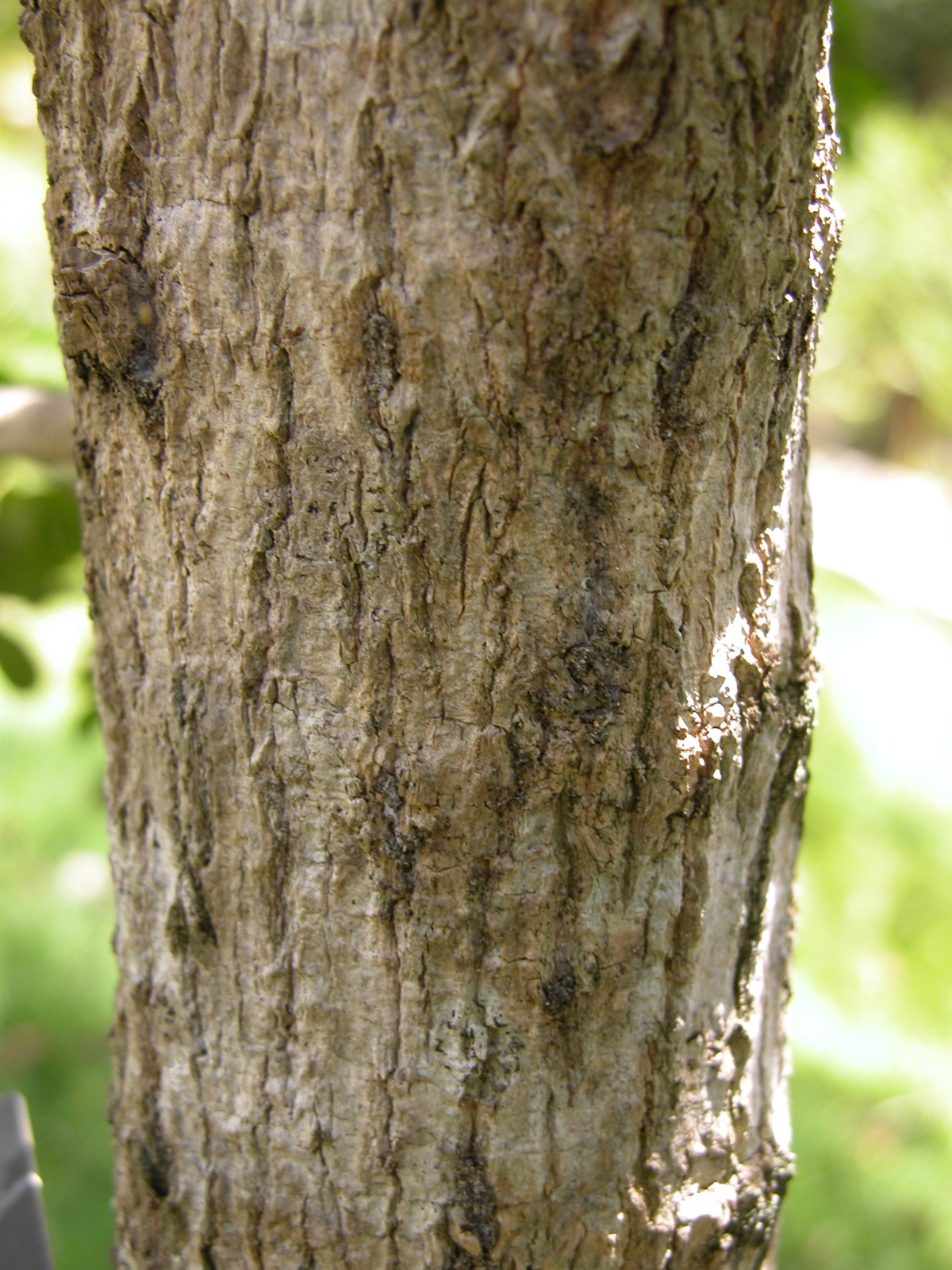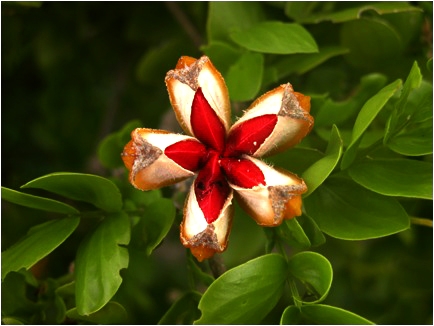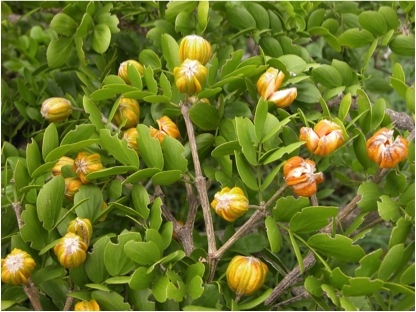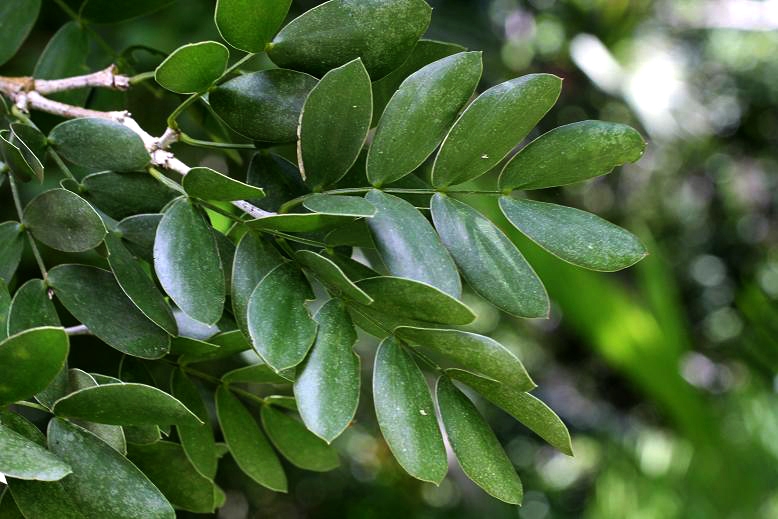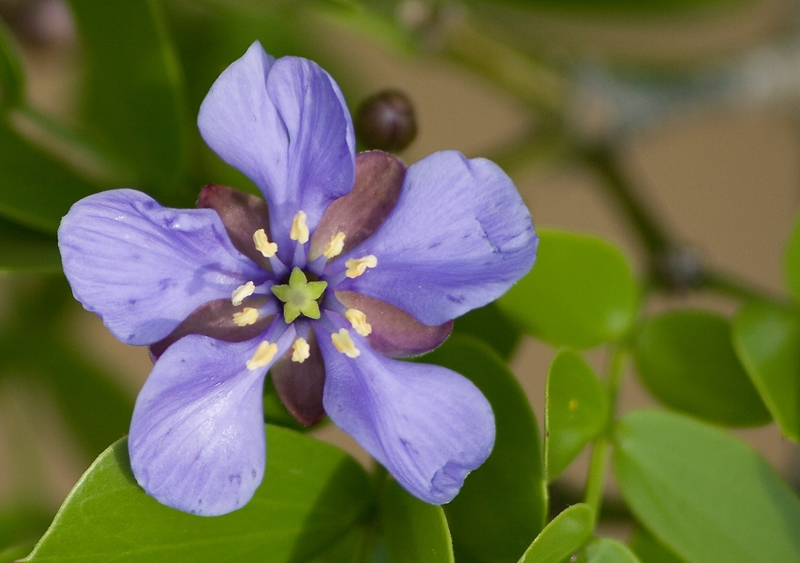Habit: Guaiacum sanctum grows as a small shrub to medium size tree up to 10 meters in height. The trunk can be to 1 meter in diameter but usually much smaller and branching at its base. The leaves are arranged oppositely and have six to 10 opposite leaflets that are apiculate and have stipules at their leaflet bases.
The complete, perfect, actinomorphic flowers are arranged solitarily in leaf axils. The calyx has 5 unfused, green sepals. The corolla has 5 unfused petals that are bluish purple in color. There are 10 unfused stamens. The ovary has 5 locules each with an ovule. The fruit is a winged capsule that turns orange at maturity. The seeds are dark colored with a bright red aril.
Habitat: Guaiacum sanctum grows in limestone based Dry Broadleaf Evergreen Formations (coppice) in both coastal and interior habitats.
Distribution: Guaiacum sanctum occurs on all island groups in the Lucayan Archipelago as well as south Florida, the Caribbean, and Central and South America.
Medicinal/Cultural/Economic usage: Guaiacum sanctum has many medicinal, cultural, and economic uses. Sap and other plant derivatives has been used to treat syphilis, fevers, general pain, gout, arthritis, rheumatism, tonsillitis, skin ailments, constipation, fish poisoning and as a component of strengthening teas. Boiling leaves produces a tea that has been used as an abortefactant.
Guaiacum sanctum wood is extremely dense and hard and has been used to produce ball bearings, bowling balls, and fish bats. Today it is a sought after wood for wood-carvings. It is also the National Tree of the Bahamas and has protected status. It is also now used in the horticultural trade because of its beautiful flowers although it is very slow growing.
There is a closely related species, G. officinale, that can be differentiated by its fruits that are two winged rather than five winged (in G. sanctum).
